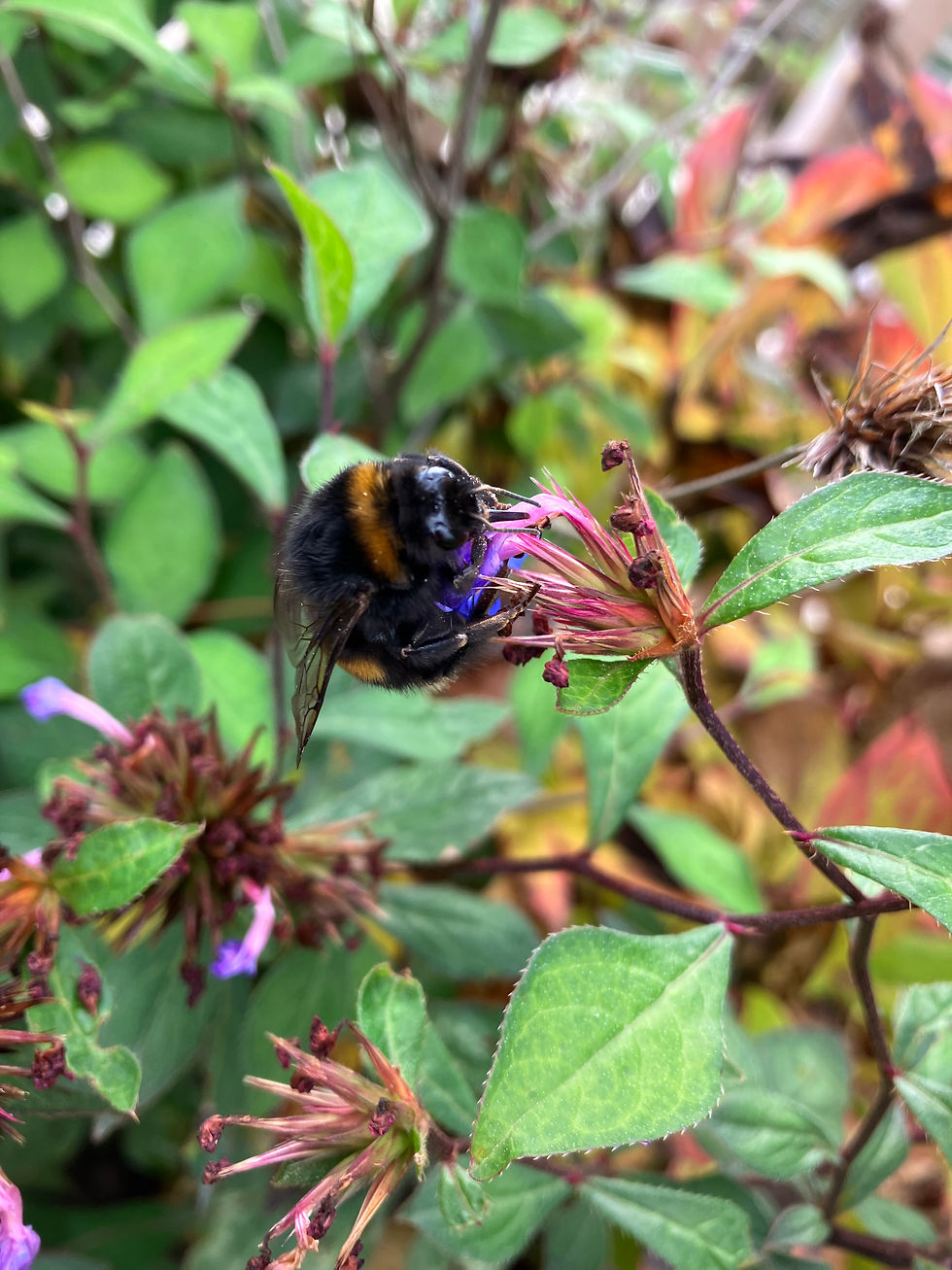Chickweed (Stellaria media)
- Laura Uphill Dip.CH, MURHP, GQA
- Oct 14
- 2 min read

Chickweed (Stellaria media) seems to come & go as it pleases, favouring shady, damp spots, it’s most abundant in spring & now again in autumn.
It’s a useful salad green in both seasons & particularly useful in autumn as it’s also an expectorant & will help as we enter the ‘season of snotty noses’. It can be used as a leafy green in sandwiches, added to other greens or veg in a salad or thrown into stir fry’s, soups & smoothies.
Chickweed is nutrient rich containing vitamin C, D, & B complex as well as calcium & iron. All these are useful to promote health & even more so that it is a ‘wild food’, bringing something different that you will not find in your average supermarket shop.
It would combine well with Broadleaf Plantain or Ribwort Plantain for a persistent cough or to reduce mucus production after a cold.
As a cream, due to its high saponin & flavonoids content, Chickweed is known to soothe itchy, inflamed skin, especially when associated with eczema & psoriasis. It’s emollient effects help to soothe dry skin & a tea made from Chickweed can be useful as a wash for acne & sore, red, irritated skin on the face. For any skin problems, it would combine well with Calendula, Chamomile, Elderflower or Honeysuckle flower to name just a few.
Although you can buy dried Chickweed, I have always been led to believe its effectiveness is greatly reduced once dry & it’s better used fresh. This is why making a cream is better than a salve as the water content from the fresh plant will reduce shelf life of your product if combined with oil.
In summary, it’s a great little plant to familiarise yourself with as it can be very useful & is quite safe to use externally or as a local, wild food. As long as you’re good on identification. 😊🌿
#naturalskincare #herbalmedicine #herbalist #handmadeuk #chickweed #eczema #psoriasis #herbalskincare





Comments